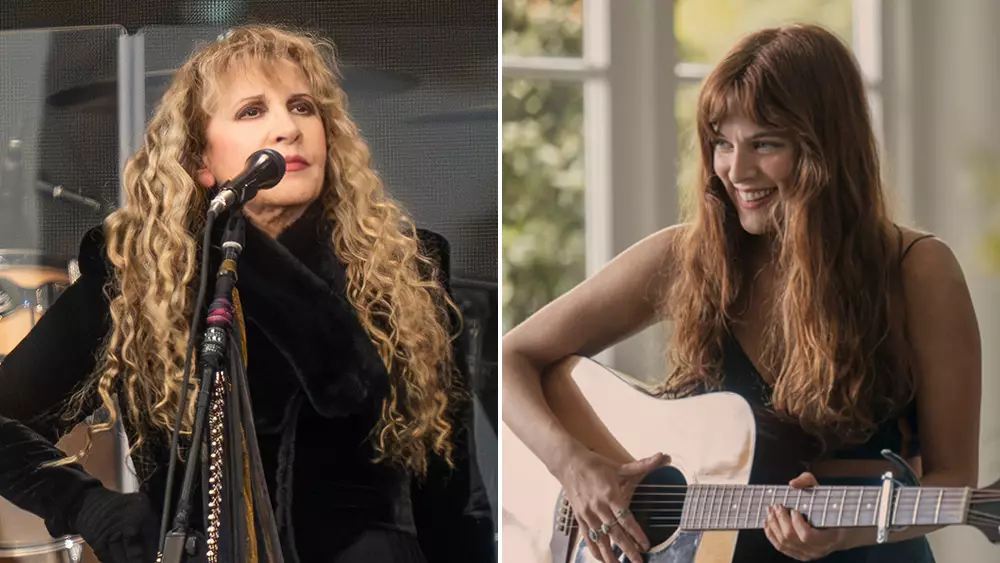Stevie Nicks, the iconic singer-songwriter and Fleetwood Mac member, seemed initially resistant to engaging with Prime Video’s adaptation of “Daisy Jones & The Six.” Based on Taylor Jenkins Reid’s popular novel, the series touches on themes and narratives that resonate deeply with Nicks’s own experiences in the music industry, particularly her complex relationship with fellow bandmate Lindsey Buckingham. Nicks’s candid admission that she had doubts about the show before viewing it gives insight into her high expectations and protective instincts about her past. It’s a familiar narrative for artists whose lives become fodder for dramatization—can one truly capture the nuances of reality through fiction?
After succumbing to her intrigue (despite having been sidelined by COVID-19 during the viewing), Nicks discovered a series that, while not a perfect mirror to her life, contained elements that she found enjoyable. In her interview with *Rolling Stone*, she revealed that this series wasn’t what she initially anticipated: “I didn’t even want to see it, because I thought I was going to hate it so much.” This admission signifies that even legends of the music world approach their legacies with skepticism. Notably, her reflections on actress Riley Keough, who portrays Daisy, hint at a particular discomfort with the portrayal of personality traits that diverge from her own.
Nicks’s analysis of the show extends beyond mere criticism; she draws deep personal connections to the characters. She expressed curiosity about Keough’s portrayal of Daisy, remarking on their contrasting personalities. Keough’s character, unlike Nicks, had the freedom to embody aspects of arrogance and brashness, traits that Nicks felt she never embraced as a founding member of Fleetwood Mac, especially alongside the peacemaking Christine McVie. This comparison sheds light on the greater dynamic at play within the group and the lasting impact of those interpersonal relationships.
Further, Nicks praised Suki Waterhouse’s portrayal of Christine McVie, expressing a poignant sense of loss regarding McVie’s absence from witnessing this representation. Such comments reveal the vulnerability that accompanies nostalgia for artists who weave their stories through the fabric of their art. She also lauded Sam Claflin’s portrayal of Billy, likening him to Buckingham in an almost eerie manner, attesting to the authenticity that resonates throughout the series. The consensus indicates that there’s an essence of truth in the show’s characters—one that stirs nostalgia, excitement, and even heartbreak for Nicks.
In light of the show’s success and favorable reception, Nicks did not shy away from contributing her ideas for a potential second season. She proposed a storyline that dives into the “what if” scenario of Billy returning after the death of his wife. This poignant suggestion resonates with many fans who grapple with the complexities of love and loss. It highlights the universal themes of reconciliation and artistic collaboration, elements Nicks has long navigated in her career.
Nicks’s conversations with Reese Witherspoon, the executive producer, and Keough showcased her enthusiasm and willingness to engage creatively with the narrative. Interestingly, her proposal reflects her belief that stories of relationships—especially those marred by complications—deserve more exploration. She sees parallels between her life and the characters developed on screen, presenting a vision of continuing that exploration.
Despite its acclaim, with nine nominations at the 75th Primetime Emmys and victories in categories like Period Costumes, the future of “Daisy Jones & The Six” remains uncertain. Showrunner Scott Neustadter expressed an openness to delve further into the narrative, yet Keough has indicated that the stars may not align for a second season anytime soon.
As Nicks continues to reflect on her life and its intersections with art, one can only hope that the stories birthed from such a powerful legacy find a way back to the screen. The connectiveness between her life experiences and the show offers rich material for further exploration—if only the stars could align once more. The interface between music legends and narrative storytelling proves to be a compelling conversation, one that celebrates both their influence and the constantly evolving nature of cultural narratives.
